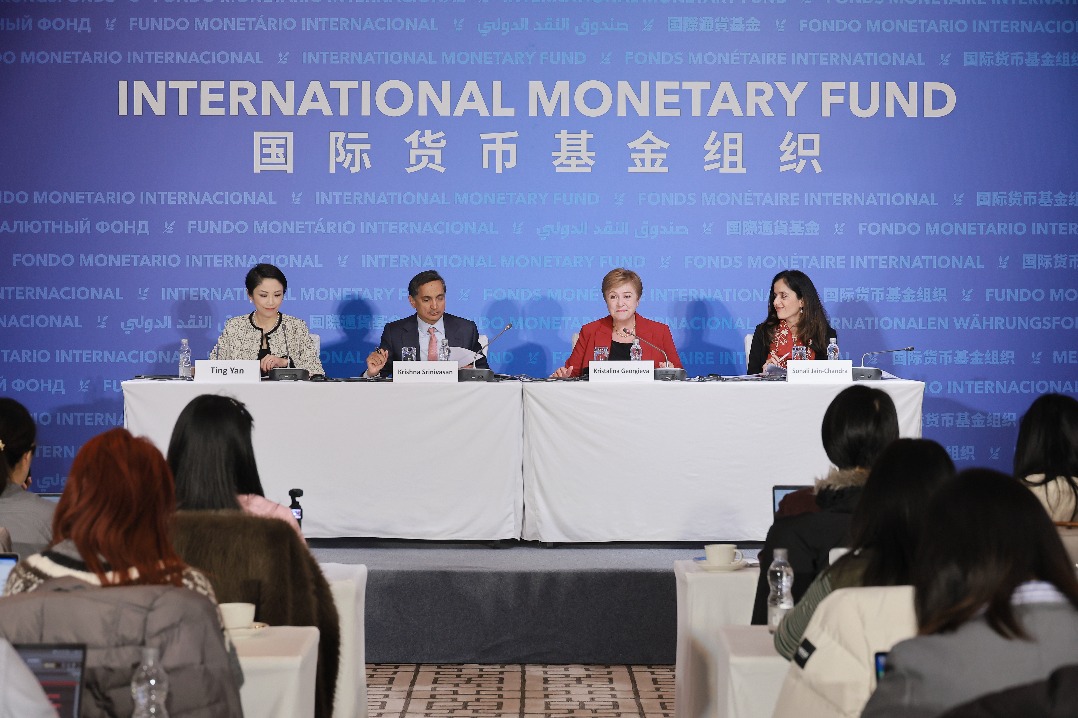Growth engine for auto world


Zhang said United States carmaker General Motors came to China in October of the same year, but instead of selling a production line, it recommended building a joint venture with Chinese companies.
One month later, the idea, which sounded overly audacious to many back then, won the nod of Deng Xiaoping, the chief architect of China's reform and opening-up policy.
GM did not build its first Chinese joint venture until 20 years later, but its idea brought about the establishment in 1983 of the first Sino-foreign partnership, between American Motors Corp with BAIC Group, and the Jeeps they produced were the most popular vehicles in the country.
Volkswagen followed soon, with its first joint venture established in 1984, with SAIC Group, and another in 1991. Both are now top-selling carmakers in the country.
"For the overall development, the 7th Five-Year plan unveiled in 1986 was the initial spark as the auto industry was then positioned as a 'strategic industry'," said Beatrix Frisch, managing director and automotive lead of Accenture Interactive Greater China.
"This was the point to grant the industry the overall attention in policymaking, even when the first joint ventures were already in place due to the economic opening-up."
Yan Guangming, a senior reporter who has been covering the auto industry since the early 1980s, said another landmark year was 1994, when China released the country's first auto development policy and organized the first exhibition of sedans, which were then called family cars.
Two of the things in the policy that proved crucial were that joint ventures were encouraged, and the percentage of sedans, which accounted for 7 percent of the 14 million units produced in 1994, should grow to 50 percent by 2000.
This move, as a beckoning gesture, prompted more international companies to tap the Chinese market.
Big names like GM, Toyota, Ford, BMW and Mercedes-Benz have set up at least 16 joint ventures since then, almost five times the figure of those established before 1994, and they remain the major players in today's Chinese market.
Four months after the auto policy was released, the first-ever exhibition of family cars in the country was held in November 1994 in Beijing.
The six-day event was fully packed, attracting over 60,000 visitors, as the Chinese were getting richer and open-minded.
However, despite the government's initiative, the event sparked a heated debate among economists over whether or not families should be encouraged to have cars, which were considered a lifestyle of capitalist societies.
Yan said it was six years later, in 2000, that ordinary families started driving sedans, thanks to the rising incomes and the affordable price of entry-level cars, represented by the Buick Sail produced by joint venture SAIC GM.
"Volkswagen showed us how to build cars, and GM showed us how to market them," said Yan recalling the popularity of the model at the turn of the century.
The unbridled demand has since surged even higher and faster, as local carmakers, including Chery and Geely, joined the game by presenting their even cheaper offerings, allowing even more Chinese families to own their very first cars in the following years.
In 2000, total vehicle sales in the country stood at 2.08 million units, and the figure soared to 13.09 million units in 2009, when China surpassed the United States as the world's largest auto market, a title that it still holds.
Frisch at Accenture Interactive said 2009 marked another era in the history of China's auto industry, as the Chinese government started promulgating policies that would turn the country's big auto industry into a competitive one.
Among other things, it was in 2009 that China began promoting the production and use of new energy vehicles, which are now believed to be the future of the global auto industry. The country has been the world's largest market for such vehicles since 2015.
The top authorities in China took the industry's opening up to a new level in 2018, phasing out the 50:50 equity cap on joint ventures laid down in the 1994 auto development policy.
International carmakers in the new energy vehicle and the commercial vehicle sectors have been allowed to establish their wholly-owned plants in the country, and the limit on carmakers producing passenger cars is expected to be abolished by 2022.
Such policy removals have prompted carmakers like Tesla to produce vehicles in China. And the competition has helped sharpen the competitive edge of the auto industry as a whole.
Nio, a Chinese electric car startup listed in New York, sold over 20,000 vehicles in the first quarter of the year. "That is more than all those international premium carmakers' electric car sales combined," said William Li, its founder and CEO.
Li, who established Nio in 2015, said China is the perfect place in the world to make smart electric cars.
"We have all the things needed, be it software, mobile internet or digitalization, and more importantly, the Chinese government has a clear ambition in terms of electrification and decarbonization," he said.
Frisch agrees. "One defining element is certainly the central role of the government as the steering element, especially in comparison to Europe and the US," she said.
"In summary, the leverage of integrated and coordinated policy formulation spanning from the core industry to adjacent industries like software and overall digital industries, gave the basis for success and future development," she said.
And success is not limited to China. Nio said its vehicles will be available in September in Norway, as the first step of its inroads into Europe, the birthplace of modern vehicles. Nio will enter another five European countries in 2022.
Before Nio, other Chinese carmakers, including SAIC and Aiways, have been shipping their electric cars to Europe. Chinese battery maker CATL is already powering vehicles from Toyota and Volkswagen to Daimler and BMW.
"We are now in the second half of the game, and I believe we stand a chance to keep the lead," said Yan.
























